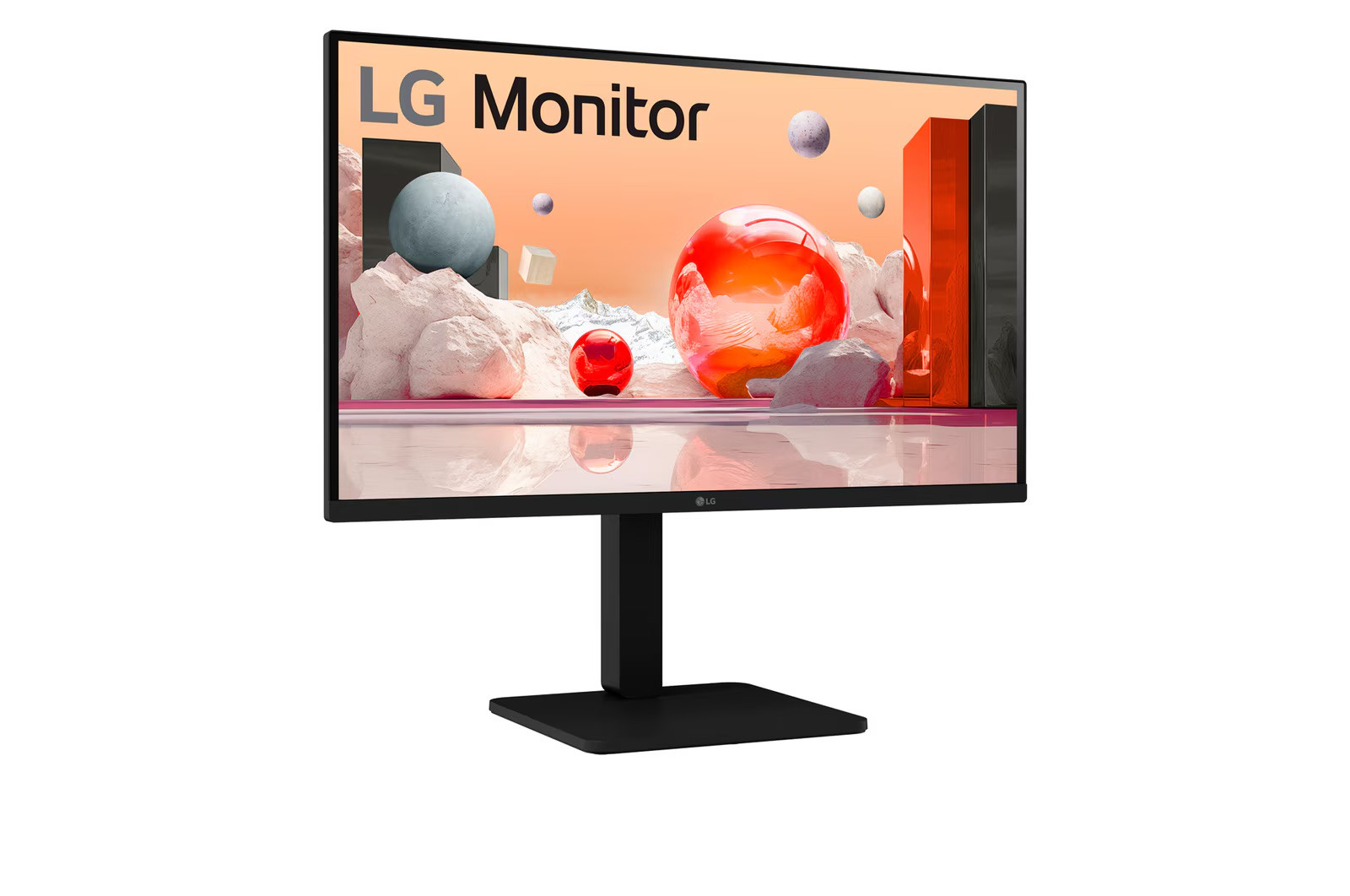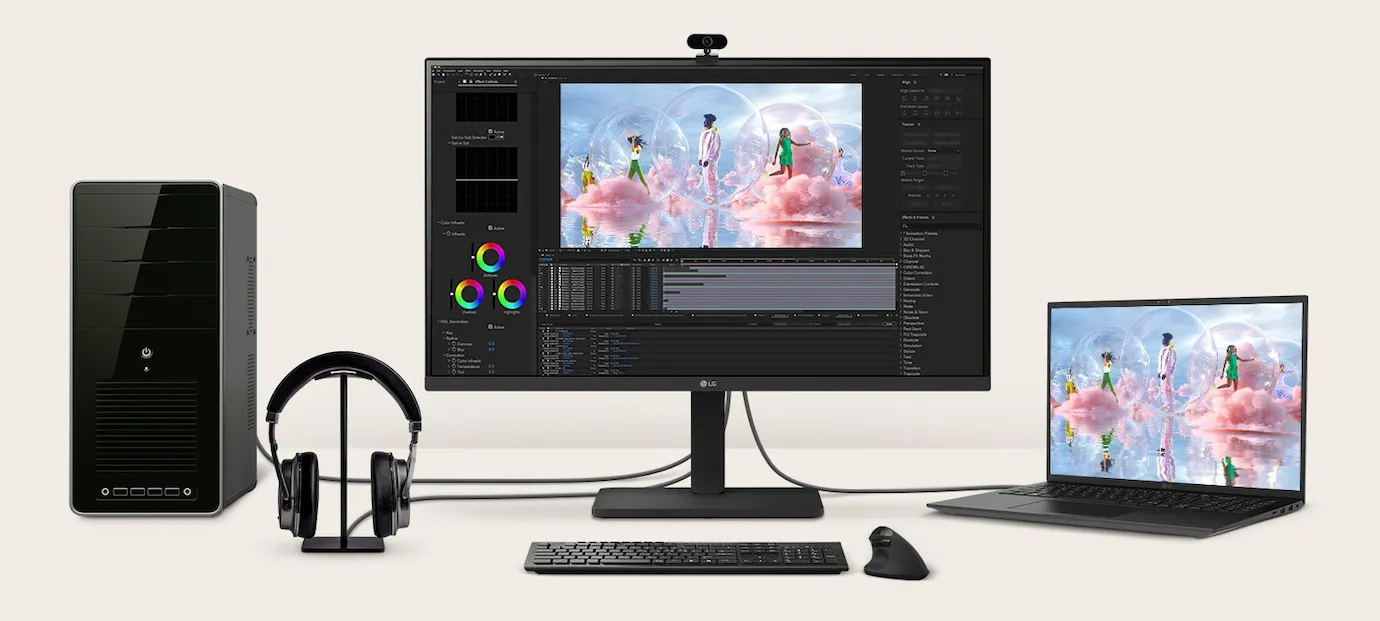







































£152.04*
- Resolution 1920 x 1080 Full HD
- Diagonal 27"
- Panel type IPS
- Refresh Rate 100Hz



Product information
The LG 27BA560-B is a powerful 27-inch monitor that impresses with its brilliant picture quality and ergonomic design. The IPS display with Full HD ensures razor-sharp images, even at wide viewing angles, and creates the perfect balance between user-friendliness, comfort and efficiency - ideal for the modern workplace.
The technical data at a glance:
- Display size: 27 inch
- Resolution: Full HD (1920 x 1080)
- Panel technology: IPS
- Refresh rate: 100 Hz
- Ergonomics: Tilt, swivel, rotation and height adjustment
- Connections: Various connection options
- Special features: Integrated speakers, integrated power supply, LG Switch app
- Visual comfort: Reading mode, Flicker Safe
- Certifications: EPEAT, Energy Star
Brilliant colour reproduction from every angle
Thanks to IPS technology, the LG 27BA560-B offers accurate and consistent colours, even at a wide viewing angle. The 27-inch display delivers clear, vivid images in Full HD resolution that are ideal for professional use. The almost borderless design on three sides gives the monitor a modern look and maximises the screen area.
Smooth image reproduction and higher productivity
With a picture refresh rate of 100 Hz, the 27BA560-B ensures afluid and interference-free display. Whether during video conferences or when working with demanding programmes, the monitor minimises judder and motion blur, which improves the workflow and increases productivity.
Multiple connectivity options and integrated speakers
The LG 27BA560-B offers various connections that make it possible to connect several devices simultaneously. This makes working more efficient and flexible. The monitor also has integrated speakers so that no additional audio devices are required - perfect for video conferencing and multimedia content.

Protect your eyes: reading mode and Flicker Safe
For a more comfortable viewing experience, the LG 27BA560-B has a reading mode that adjusts the colour temperature and brightness to protect the eyes. In addition,the Flicker Safe technology reduces the invisible flickering of the screen, which minimises eye strain and increases visual comfort even during longer working hours.
Ergonomic design for maximum comfort
The monitor is ergonomically designed and can be tilted, swivelled, rotated and adjusted in height so that it can be individually adapted to the user's needs. This not only ensures greater comfort during long working hours, but also facilitates communication at the workplace, for example during meetings or customer discussions.
The LG 27BA560-B offers everything you need for an efficient and comfortable working day: excellent picture quality, ergonomic flexibility and eye-friendly technologies.
Technical data
| Name | LG 27BA560-B 27" IPS Monitor, 1920 x 1080 Full HD, 100Hz |
|---|---|
| Article number | 1000033155 |
| GTIN/EAN | 8806096015391 |
| Manufacturer SKU | 27BA560-B.AEUQ |
| EPREL ID | 1967647 |
| Model name | 27BA560-B |
| Brand | LG |
| Product Type | Monitor |
| Product Series | LG Business Series |
| Panel type | IPS |
| Resolution | 1920 x 1080 Full HD |
| Diagonal | 27" |
| Aspect Ratio | 16:9 |
| Viewing angle - Horizontal | 178° |
| Viewing angle - Vertical | 178° |
| Contrast Ratio | 1,300 :1 |
| Max. Brightness | 250 cd/m² |
| Refresh Rate | 100Hz |
| Inputs | 1x Displayport , 1x HDMI , 1x USB-B |
| Outputs | 1x USB-A |
| Product width | 61.08 cm |
| Product height | 36.03 cm |
| Product depth | 5.08 cm |
| Weight | 5.05 kg |
| Colour | Black |
| EEK Spectrum | A to G |
| Energy efficency class | D |
| Condition | New |
| Warranty | 36 Month |
| Warranty type | Swap service Service and support information |
Product safety
| Person responsible for the EU |
|---|
| LG Electronics Deutschland GmbH |
| Alfred-Herrhausen-Allee 3-5 |
| 65760 Eschborn |
| Germany |
| info@lge.de |



